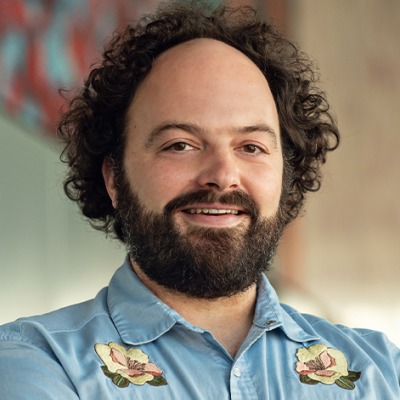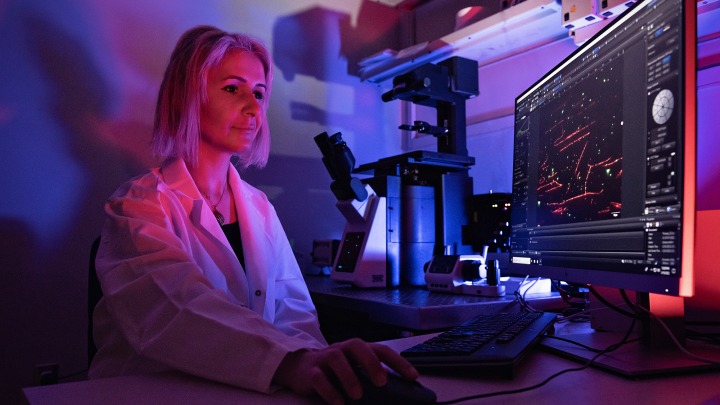Dr. Michael Cianfrocco and a team of U-M researchers discover new mechanisms used by HIV to infiltrate cells
Pictured above: Somaye Badieyan, Ph.D., Assistant Research Scientist, Cianfrocco Lab, Life Sciences Institute.
Photo by Leisa Thompson Photography, provided by the U-M Life Sciences Institute.
Center for RNA Biomedicine affiliate faculty Michael Cianfrocco, Ph.D., found that HIV is a much more cunning hijacker than previously theorized.

Michael Marletta Collegiate Professor in the Life Sciences; Research Associate Professor, U-M Life Sciences Institute; Associate Professor, Department of Biological Chemistry, U-M Medical School; Director, Perrigo Undergraduate Summer Fellowship Program, U-M Life Sciences Institute
In a new study, Lead Principal Investigator Dr. Michael Cianfrocco and his team demonstrated that HIV can bind directly to dynein motor proteins, using them as a means of intracellular trafficking to navigate efficiently within the host cell, facilitating its replication and spread.
Dynein motor proteins are also used by cells to transport RNA molecules to specific sites, which are essential for proper protein synthesis and regulation.
By revealing how HIV commandeers dynein, the research not only advances our knowledge of viral infections but also underscores the critical role of cellular transport mechanisms in both health and disease.
The findings were published June 18 in a new article in Science Advances, “HIV-1 binds dynein directly to hijack microtubule transport machinery,” Science Advances. DOI: 10.1126/sciadv.adn6796
Read the full story by Emily Kagey, Director of LSI Marketing and Communications, University of Michigan Life Sciences Institute.
Cover image: Photo by Leisa Thompson Photography, provided by the U-M Life Sciences Institute.


